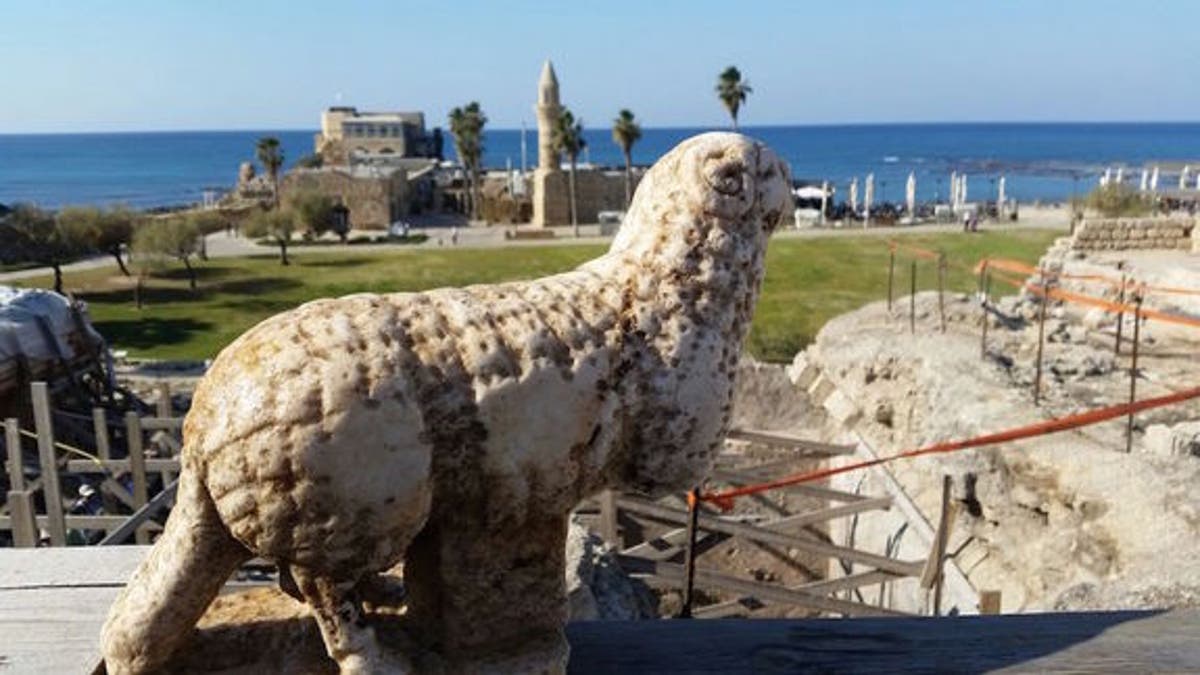
Archaeologists found an ancient marble ram in Caesarea Harbor National Park along Israel's Mediterranean coast. (Vered Sarig | The Caesarea Development Corporation)
A hand-carved marble statue of a ram that was uncovered last week along Israel's Mediterranean coast has archaeologists guessing about who carved the creation.
Archaeologists found the statue on Thursday (Dec. 24), but they say its unclear whether it was carved by Byzantine artisans, or if it was made by Romans and then later repurposed by the Byzantine church, the Israel Antiquities Authority said.
The researchers found the statue during the excavation of an ancient church in Caesarea Harbor National Park, a landmark about 25 miles (40 kilometers) south of Haifa. [The Holy Land: 7 Amazing Archaeological Finds]
"Caesarea never ceases to surprise, as evidenced by this amazing statue," Peter Gendelman and Mohammad Hater, directors of the excavation working on behalf of the Israel Antiquities Authority, said in a statement.
Despite the artifact's age, the original carvings can still be seen on the 1.3-feet-tall by 1-foot-long statue (40 centimeters by 30 centimeters). The ram's textured fleece and curly horns are visible, the archaeologists said.
It's possible that ancient artists carved the ram for religious reasons, the archaeologists said. In the New Testament of the Bible, there is a verse that refers to Jesus as a lamb: "The next day, he saw Jesus coming toward him, and said, "Behold, the Lamb of God, who takes away the sin of the world!"
Rams, along with lambs, are frequently used in Christian art to represent faithful Christians, or Jesus himself, the Israel Antiquities Authority said in a statement. Sometimes, ancient artisans depicted rams around the shoulders of Jesus. Other times, a ram is shown on the left or right of the "Good Shepherd," depicting how he tended to his flock.
"In ancient Christianity, Jesus was not portrayed as a person," Gendelman and Hater said. "Instead, symbols were used, one of which was the ram."
However, other cultures also use ram images symbolically. Archaeologists have spotted rams alongside depictions of the Greek gods Hermes and Mercury in Roman art, as well as next to the Egyptian god Amun, a deity associated with Egypt's royalty.
"The statue that we found might have been part of the decoration of a Byzantine church from the sixth [to] seventh centuries C.E. at Caesarea," Gendelman and Hater said. "By the same token, it could also be earlier, from the Roman period, and was [later] incorporated in secondary use in the church structure."
Researchers have found other depictions of rams from archaeological digs in modern-day Israel, including a 9,500-year-old limestone ram with carved spiral horns that may have served as a lucky charm.
- The 7 Most Mysterious Archaeological Finds on Earth
- 8 Grisly Archaeological Discoveries
- Image Gallery: Ancient Lucky Charms
Copyright 2015 LiveScience, a Purch company. All rights reserved. This material may not be published, broadcast, rewritten or redistributed.
